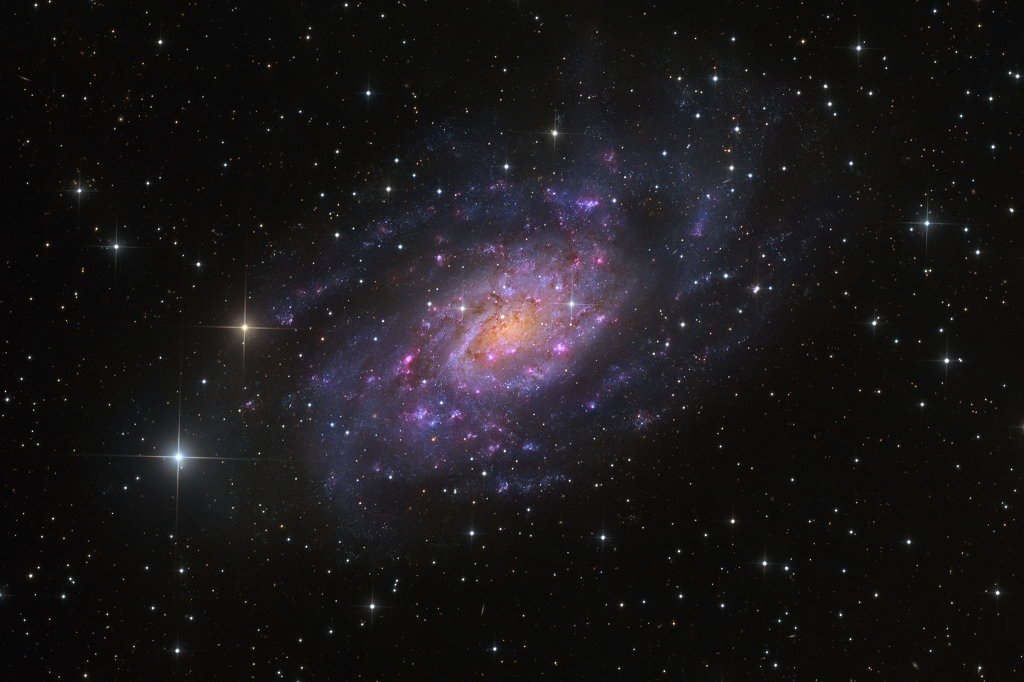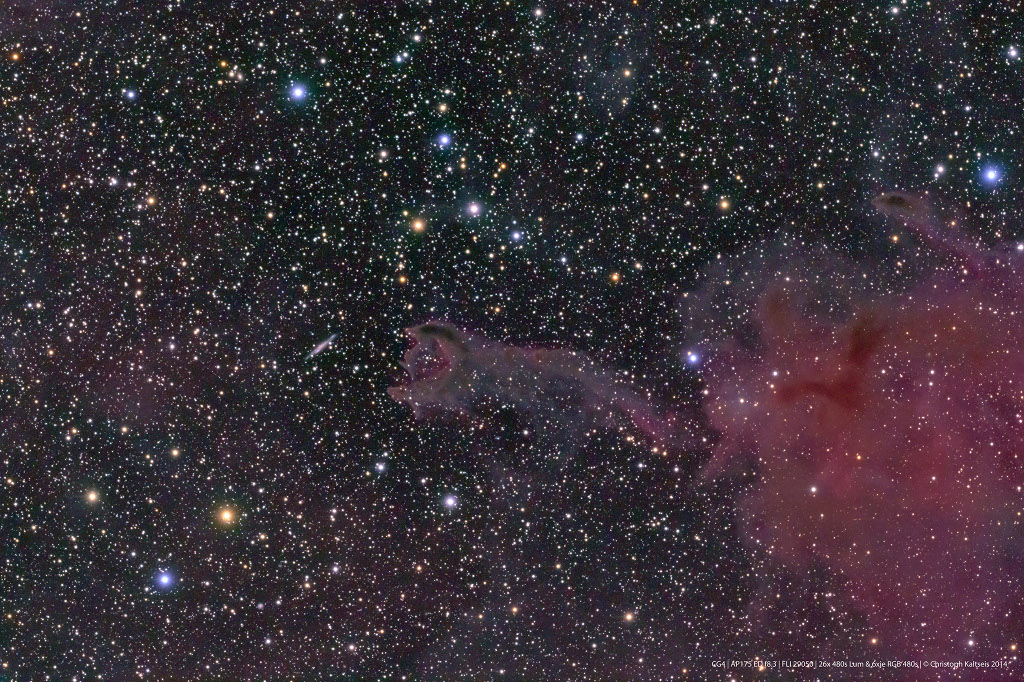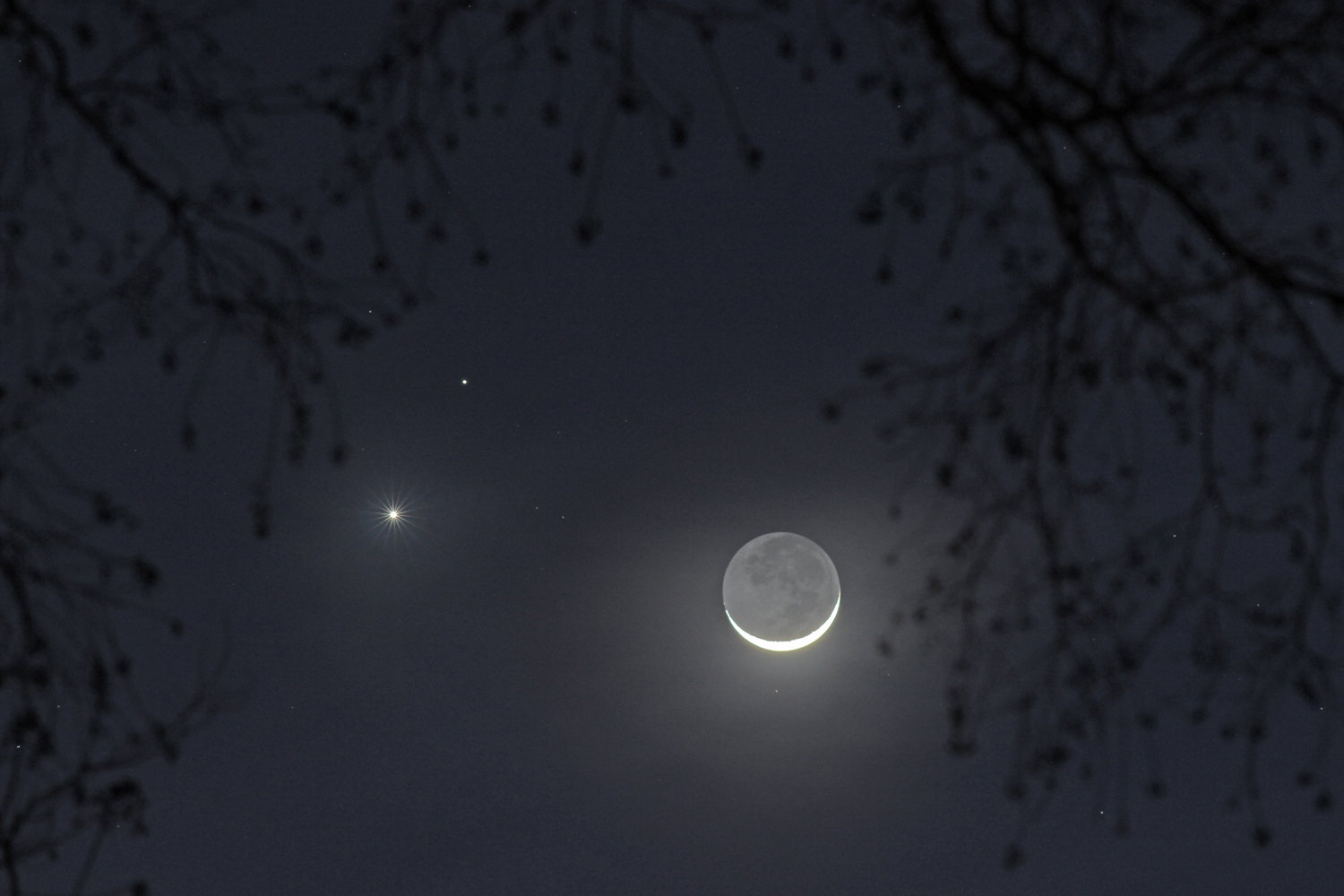NGC 2403 is a spiral galaxy seen in Camelopardalis. It is some ten million light year distant and 50,000 light years across. Marked by the reddish glow of hydrogen gas, NGC 2403 has giant star forming HII regions. The stars explode as bright supernovae at the end of their lives. The bright stars in the foreground are part of our own galaxy, the Milky Way.
Friday, March 27, 2015
Sunday, March 22, 2015
Observation: February 21st aka Astronomy Night
Time: 6:30-7:30 (2 Hours)
Place: Pine View School
Sky Conditions: Cloudy
Instruments Used: Night Sky App, Binoculars, variety of telescopes
Bright Stars noted: Gamma Andromeda, Aldebaren, Betelgeuse, Rigel, Castor, Pollox
Constellations noted: Gemini, Pegasus, Orion, Taurus
Friday, March 20, 2015
APOD 3.8
Earth During a Total Eclipse of the Sun: http://apod.nasa.gov/apod/ap150318.html
During a total solar eclipse, the moon's shadow creates a dark region on Earth. The shadow spot moves across Earth at nearly 2,000 km per hour, darkening the areas for only minutes at a time. This photo was taken during March 2006 from the International Space Station. This apod is perfect timing because today there will be a total solar eclipse!
Friday, March 6, 2015
APOD 3.7
Cometary Globule CG4: http://apod.nasa.gov/apod/ap150306.html
Cometary globule CG4 is about 1300 light-years from Earth near the constellation Puppis. Its head is about 1.5 light-years in diameter and its tail is about 8 light-years long. The dusty cloud contains enough material to form several Sun-like stars. Its tail comes away from the Vela Supernova remnant near the center of the Gum Nebula.
Thursday, March 5, 2015
APOD 3.6
Love and War by Moonlight: http://apod.nasa.gov/apod/ap150226.html
Venus and Mars came together near the moon on February 20. This image was taken in Charleston, South Carolina using the three second time exposure. The Moon has since moved from this triple conjunction, but Venus can still be seen as the third brightest object in Earth's sky. The triple conjunction is slowly becoming more distant from each other.
Monday, March 2, 2015
Planetary Nebulae
The Egg Nebula: Believed to be a proto-planetary nebula, representing the transition to the planetary nebula phase. It is part of Cygnus, although distance is uncertain it is probably 3000 light years away
Ring Nebula, M57: Located in Lyra about 2,300 light-years away from Earth. It is an example of a bipolar nebulae.
Medusa Nebula, Abell 21: An old planetary nebula about 1,500 light-years away in Gemini. It is estimated to be over 4 light-years across.
Sharpless 2-188: It found in the constellation Cassiopeia. It is about 9' in diameter and 2800 light years distant.
Soap Bubble Nebula: Located in the constellation of Cygnus, not far from the Crescent Nebula.
The Dumbbell Nebula, M27: The nebula is about 850 light-years away and 1.5 light-years across. It is located in Vulpecula.
The Owl Nebula, M97: One of the more complex planetary nebulae and it is located in the constellation Ursa Major. It is located approx. 2030 light years away and is about 8,000 years old.
M46: A rich open star cluster in the constellation Puppis. Within a diameter of 30 light-years at its distance of 5400 light years, it contains over 150 bright stars.
The Ear Nebula: A bipolar planetary nebula in the constellation of Cygnus. It is about 6' long.
NGC40: Located in Cepheus, about 4000 light-years away from Earth.
Subscribe to:
Comments (Atom)




![[Egg]](http://www.noao.edu/image_gallery/images/crl2688a.gif)








